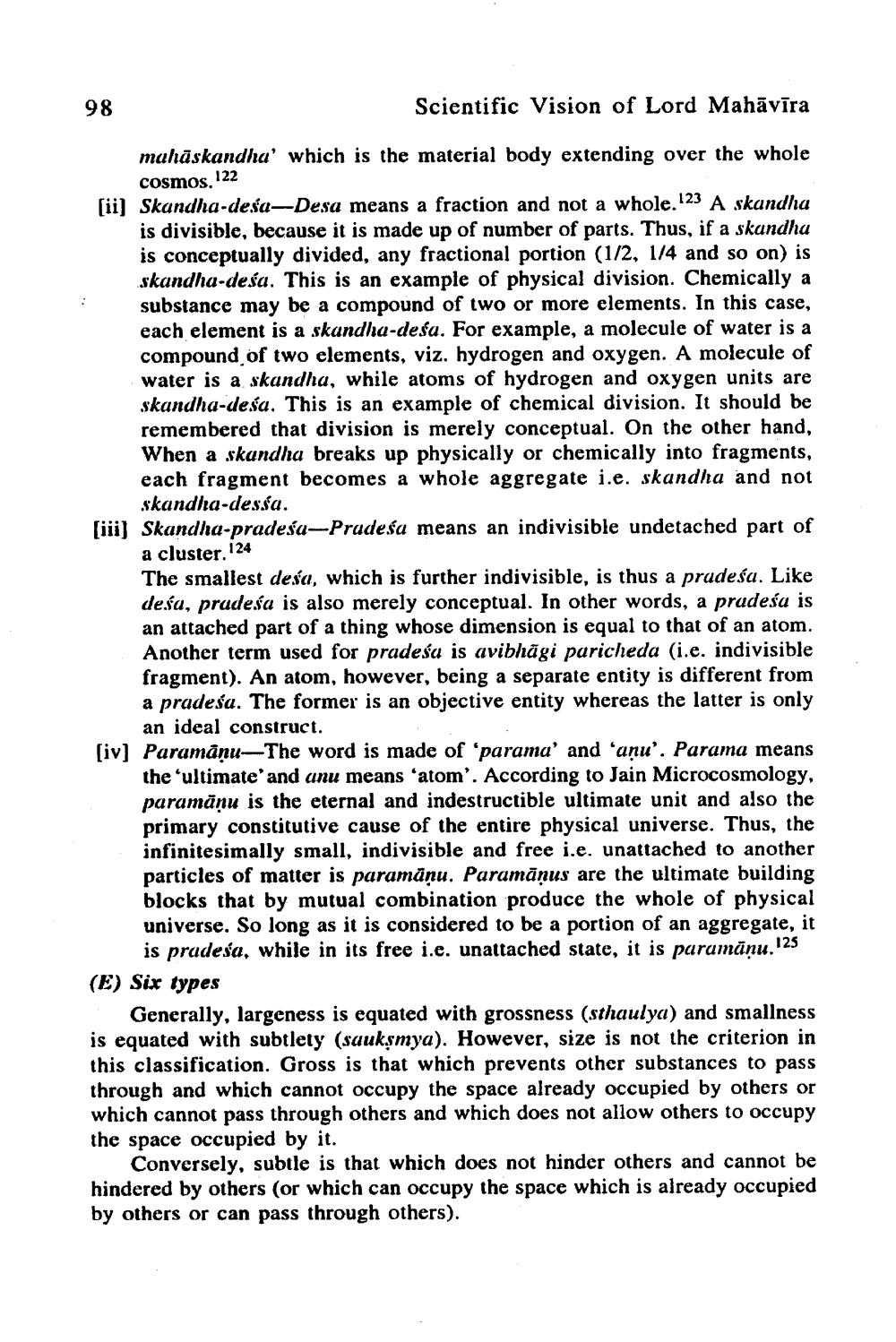________________
98
Scientific Vision of Lord Mahāvīra
mahāskandha' which is the material body extending over the whole
cosmos. 122 (ii) Skandha-desa-Desa means a fraction and not a whole.123 A skandha
is divisible, because it is made up of number of parts. Thus, if a skandhu is conceptually divided, any fractional portion (1/2, 1/4 and so on) is skandha-deśa. This is an example of physical division. Chemically a substance may be a compound of two or more elements. In this case, each element is a skandha-desa. For example, a molecule of water is a compound of two elements, viz. hydrogen and oxygen. A molecule of water is a skandha, while atoms of hydrogen and oxygen units are skandha-deśa. This is an example of chemical division. It should be remembered that division is merely conceptual. On the other hand, When a skandha breaks up physically or chemically into fragments, each fragment becomes a whole aggregate i.e. skandha and not
skandha-dessa. (iii) Skandha-pradeśa-Pradeśa means an indivisible undetached part of
a cluster. 124 The smallest deśa, which is further indivisible, is thus a prudeśa. Like deśa, prudeśa is also merely conceptual. In other words, a prudesa is an attached part of a thing whose dimension is equal to that of an atom. Another term used for pradeśa is avibhāgi paricheda (i.e. indivisible fragment). An atom, however, being a separate entity is different from a pradeśa. The former is an objective entity whereas the latter is only
an ideal construct. [iv] Paramāņu—The word is made of 'parama' and 'anu'. Parama means
the ultimate and anu means 'atom'. According to Jain Microcosmology, paramānu is the eternal and indestructible ultimate unit and also the primary constitutive cause of the entire physical universe. Thus, the infinitesimally small, indivisible and free i.e. unattached to another particles of matter is paramāņu. Paramāņus are the ultimate building blocks that by mutual combination produce the whole of physical universe. So long as it is considered to be a portion of an aggregate, it
is pradeśa, while in its free i.e. unattached state, it is parumānu. 125 (E) Six types
Generally, largeness is equated with grossness (sthaulya) and smallness is equated with subtlety (sauksmya). However, size is not the criterion in this classification. Gross is that which prevents other substances to pass through and which cannot occupy the space already occupied by others or which cannot pass through others and which does not allow others to occupy the space occupied by it.
Conversely, subtle is that which does not hinder others and cannot be hindered by others (or which can occupy the space which is already occupied by others or can pass through others).




